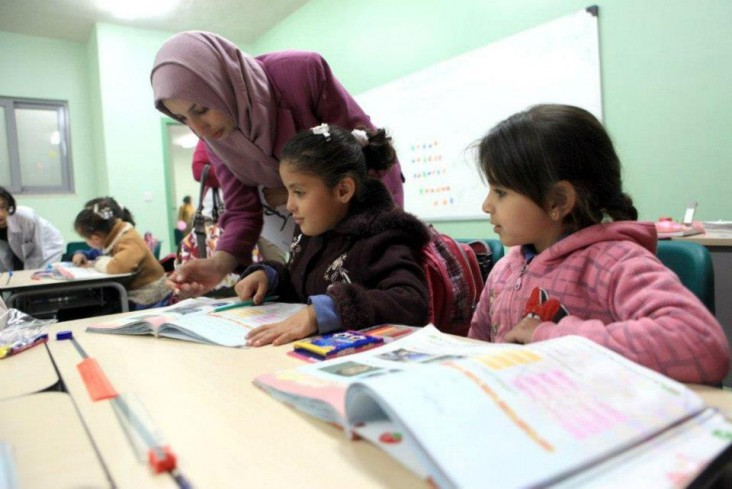
The town of Al-Mafraq—"the crossroads" in Arabic—was a major intersection of civilizations throughout history. Today, with the conflict in Syria only 10 kilometers away, the town is at a new “crossroad” as it has received a large influx of Syrians fleeing violence. During the two years since the conflict began, Jordan opened its border to more than 540,000 Syrians—housing the majority in local communities rather than refugee camps—straining Jordan’s already limited natural and financial resources.
Mafraq recently celebrated the opening of a new school with a new approach to education that helps the community support the large number of refugee families.
“When I came to Jordan, my first thought was putting my children in school ... . I’m so grateful to the Jordanian Government for receiving them and for everyone treating us like brothers,” says Mohammad*, a Syrian whose daughter attends the newly constructed public school for girls. She is among 24 Syrian refugees attending the regular day session at Princess Alia Bint Al-Hussein School for Girls, with more than 800 Jordanians. Mohammad’s younger children attend an afternoon program at the same school for 143 Syrian boys and girls, grades 1 through 7, who could not be accommodated in regular public school classes.
The Mafraq school is one of 28 new USAID-constructed schools that are being built across Jordan between 2009 and 2014, the result of a partnership with the Jordanian Ministry of Education, NGOs and private sector partners. The new schools will open just in time to help northern communities address the rapid growth in demand. Six of them are located in the northern districts of Mafraq, Irbid, Jerash and Ajlun, serving an estimated 7,000 students in communities absorbing large numbers of refugees. In addition to the new schools, another 100 existing public schools will be expanded or renovated with USAID support between 2009 and 2013, including 10 in Mafraq that are currently undergoing expansion.
Jordanians are also expressing their reactions to the new schools, which are encouraging students to be more actively engaged in their learning, with teachers using new techniques to promote initiative and cooperation.
Dima, a Mafraq student, says, “This school is our dream. It opened a new world for us with facilities, activities and libraries and the leadership of distinguished teachers and staff.” Another student, Farah, notes that, “Our teachers are…different now—in the way they work with us. They ask us to share what we know about a topic before they start presenting a class.”
Parents notice the new spirit at the school. “This is a model modern school and our girls are comfortable here,” says one father. “It changed the mood of the students,” says a mother. “Their academic achievement is better due to smaller classes and the new teaching approach, and they bring their creativity home,” such as ideas about saving electricity.
Issam Omar, a USAID education specialist, says, “Our support of the MoE [Ministry of Education] was meant to strengthen educational institutions and educators and to provide more opportunities and a better future for Jordanian students and their families. By good fortune, it also makes communities more capable of responding to the needs of their neighbors in crisis.”
*Last name withheld to protect privacy.







Comment
Make a general inquiry or suggest an improvement.